You searched for:"José Colleti Júnior"
We found (9) results for your search.-
Original Article
Physical rehabilitation in Brazilian pediatric intensive care units: a multicenter point prevalence study
Crit Care Sci. 2023;35(3):290-301
Abstract
Original ArticlePhysical rehabilitation in Brazilian pediatric intensive care units: a multicenter point prevalence study
Crit Care Sci. 2023;35(3):290-301
DOI 10.5935/2965-2774.20230388-pt
Views5ABSTRACT
Objective:
To determine the prevalence and factors associated with the physical rehabilitation of critically ill children in Brazilian pediatric intensive care units.
Methods:
A 2-day, cross-sectional, multicenter point prevalence study comprising 27 pediatric intensive care units (out of 738) was conducted in Brazil in April and June 2019. This Brazilian study was part of a large multinational study called Prevalence of Acute Rehabilitation for Kids in the PICU (PARK-PICU). The primary outcome was the prevalence of mobility provided by physical therapy or occupational therapy. Clinical data on patient mobility, potential mobility safety events, and mobilization barriers were prospectively collected in patients admitted for ≥ 72 hours.
Results:
Children under the age of 3 years comprised 68% of the patient population. The prevalence of therapist-provided mobility was 74%, or 277 out of the 375 patient-days. Out-of-bed mobility was most positively associated with family presence (adjusted odds ratios 3.31;95%CI 1.70 – 6.43) and most negatively associated with arterial lines (adjusted odds ratios 0.16; 95%CI 0.05 – 0.57). Barriers to mobilization were reported on 27% of patient-days, the most common being lack of physician order (n = 18). Potential safety events occurred in 3% of all mobilization events.
Conclusion:
Therapist-provided mobility in Brazilian pediatric intensive care units is frequent. Family presence was high and positively associated with out-of-bed mobility. The presence of physiotherapists 24 hours a day in Brazilian pediatric intensive care units may have a substantial impact on the mobilization of critically ill children.
Keywords:Critical careIntensive care unitsOccupational therapypediatricPhysical therapy modalitiesRehabilitationSee more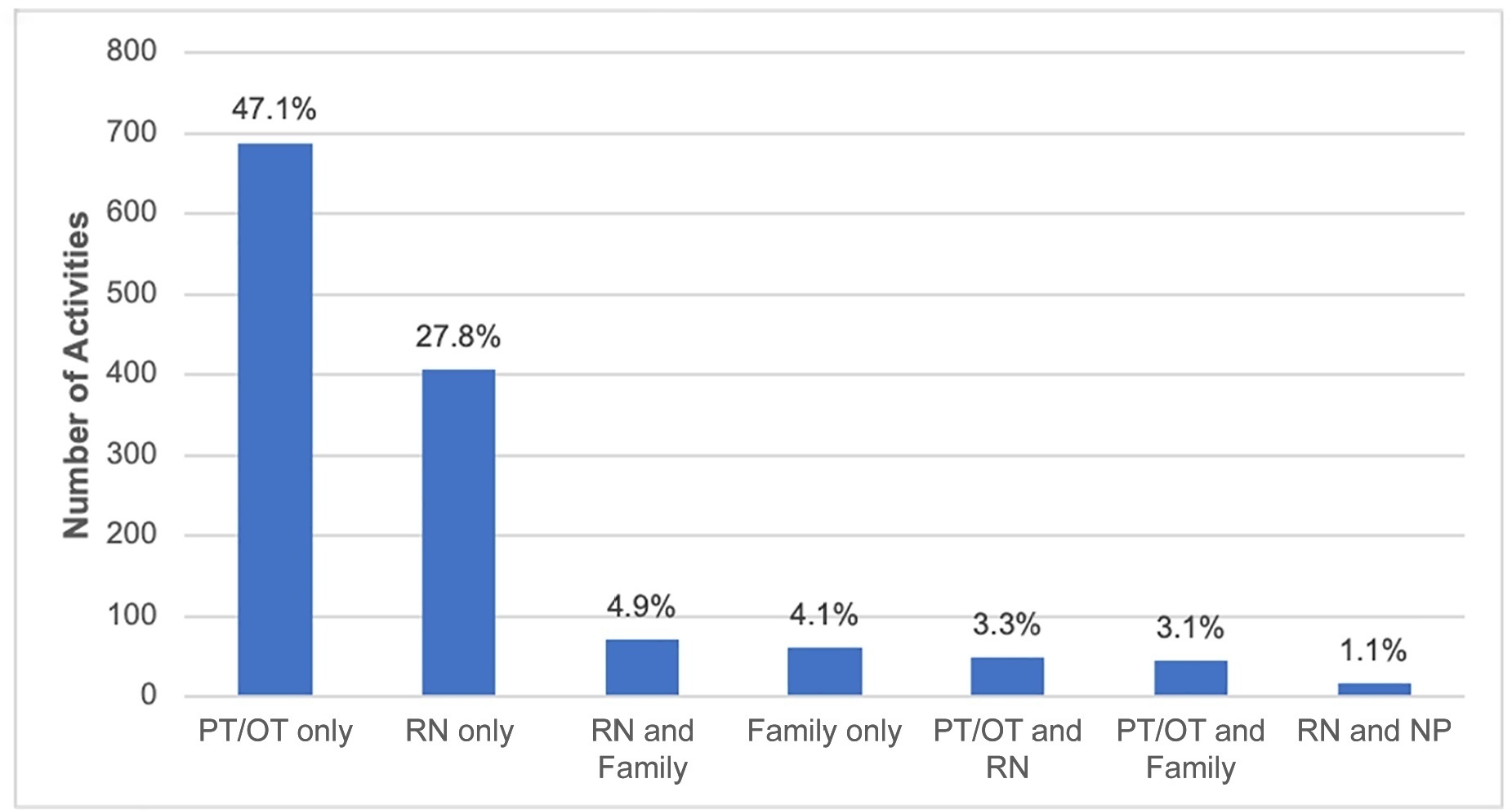
-
Letter to the Editor
Methemoglobinemia induced by dapsone in a pediatric patient: case report
Crit Care Sci. 2023;35(2):233-235
Abstract
Letter to the EditorMethemoglobinemia induced by dapsone in a pediatric patient: case report
Crit Care Sci. 2023;35(2):233-235
DOI 10.5935/2965-2774.20230018-pt
Views5INTRODUCTIONMethemoglobinemia is a rare condition and one of the differential diagnoses of cyanosis in the pediatric age group.() Clinical symptoms vary according to the levels of methemoglobin (MetHb) in the blood and may be nonspecific. The most common symptoms are central cyanosis, headache, fatigue, and respiratory depression.() Therefore, it is essential to recognize and treat […]See more -
Original Article
Knowledge regarding extracorporeal membrane oxygenation management among Brazilian pediatric intensivists: a cross-sectional survey
Crit Care Sci. 2023;35(1):57-65
Abstract
Original ArticleKnowledge regarding extracorporeal membrane oxygenation management among Brazilian pediatric intensivists: a cross-sectional survey
Crit Care Sci. 2023;35(1):57-65
DOI 10.5935/2965-2774.20230350-pt
Views4ABSTRACT
Objective:
To assess Brazilian pediatric intensivists’ general knowledge of extracorporeal membrane oxygenation, including evidence for its use, the national funding model, indications, and complications.
Methods:
This was a multicenter cross-sectional survey including 45 Brazilian pediatric intensive care units. A convenience sample of 654 intensivists was surveyed regarding their knowledge on managing patients on extracorporeal membrane oxygenation, its indications, complications, funding, and literature evidence.
Results:
The survey addressed questions regarding the knowledge and experience of pediatric intensivists with extracorporeal membrane oxygenation, including two clinical cases and 6 optional questions about the management of patients on extracorporeal membrane oxygenation. Of the 45 invited centers, 42 (91%) participated in the study, and 412 of 654 (63%) pediatric intensivists responded to the survey. Most pediatric intensive care units were from the Southeast region of Brazil (59.5%), and private/for-profit hospitals represented 28.6% of the participating centers. The average age of respondents was 41.4 (standard deviation 9.1) years, and the majority (77%) were women. Only 12.4% of respondents had taken an extracorporeal membrane oxygenation course. Only 19% of surveyed hospitals have an extracorporeal membrane oxygenation program, and only 27% of intensivists reported having already managed patients on extracorporeal membrane oxygenation. Specific extracorporeal membrane oxygenation management questions were responded to by only 64 physicians (15.5%), who had a fair/good correct response rate (median 63.4%; range 32.8% to 91.9%).
Conclusion:
Most Brazilian pediatric intensivists demonstrated limited knowledge regarding extracorporeal membrane oxygenation, including its indications and complications. Extracorporeal membrane oxygenation is not yet widely available in Brazil, with few intensivists prepared to manage patients on extracorporeal membrane oxygenation and even fewer intensivists recognizing when to refer patients to extracorporeal membrane oxygenation centers.
Keywords:ChildExtracorporeal membrane oxygenationHealth knowledge, attitudes, practicePediatric intensive care unitsSurvey and questionnairesSee more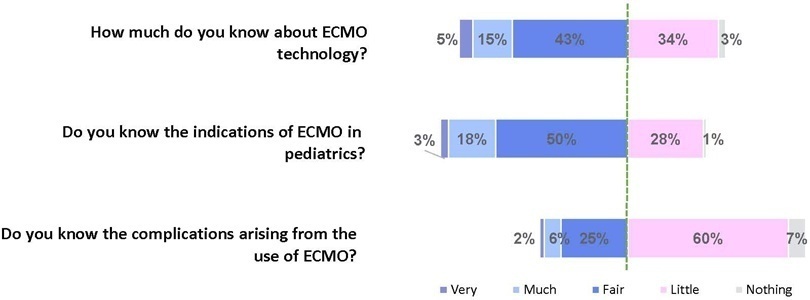
-
Original Article
Extracorporeal membrane oxygenation for respiratory failure in children: the years before and after the 2009 H1N1 pandemic
Rev Bras Ter Intensiva. 2021;33(4):544-548
Abstract
Original ArticleExtracorporeal membrane oxygenation for respiratory failure in children: the years before and after the 2009 H1N1 pandemic
Rev Bras Ter Intensiva. 2021;33(4):544-548
DOI 10.5935/0103-507X.20210082
Views0ABSTRACT
Objective:
To evaluate whether there was any impact on the number of pediatric extracorporeal membrane oxygenation runs and survival rates in the years subsequent to the 2009 pandemic.
Methods:
We studied two different periods of extracorporeal membrane oxygenation support for respiratory failure in children by analyzing datasets from the Extracorporeal Life Support Organization. Autoregressive integrated moving average models were constructed to estimate the effect of the pandemic. The year 2009 was the year of intervention (the H1N1 epidemic) in an interrupted time series model. Data collected from 2001 – 2010 were considered preintervention, and data collected from 2010 – 2017 were considered postintervention.
Results:
There was an increase in survival rates in the period 2010 – 2017 compared to 2001 – 2010 (p < 0.0001), with a significant improvement in survival when extracorporeal membrane oxygenation was performed for acute respiratory failure due to viral pneumonia. The autoregressive integrated moving average model shows an increase of 23 extracorporeal membrane oxygenation runs per year, prior to the point of the level effect (2009). In terms of survival, the preslope shows that there was no significant increase in survival rates before 2009 (p = 0.41), but the level effect was nearly significant after two years (p = 0.05), with a 6% increase in survival. In four years, there was an 8% (p = 0.03) increase in survival, and six years after 2009, there was up to a 10% (p = 0.026) increase in survival.
Conclusion:
In the years following 2009, there was a significant, global incremental increase in the extracorporeal membrane oxygenation survival rates for all runs, mainly due to improvements in the technology and treatment protocols for acute respiratory failure related to viral pneumonia and other respiratory conditions.
Keywords:ARDSChildExtracorporeal membrane oxygenationH1N1H1N1 SubtypeHumanInfluenzaInfluenza A virusPandemicsRespiratory distress syndromeRespiratory insufficiencySurvival rateSee more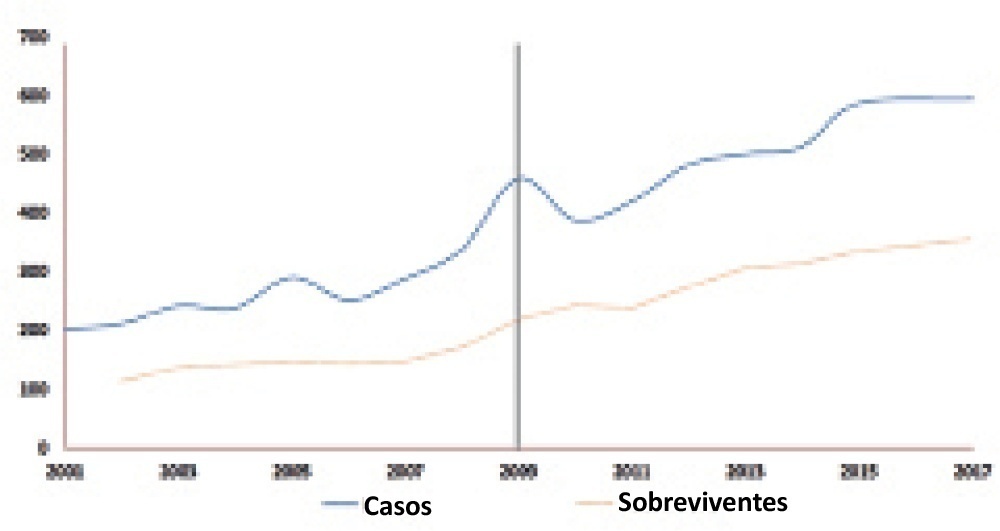
-
Original Article
Clinical practices related to high-flow nasal cannulas in pediatric critical care in Brazil compared to other countries: a Brazilian survey
Rev Bras Ter Intensiva. 2021;33(3):384-393
Abstract
Original ArticleClinical practices related to high-flow nasal cannulas in pediatric critical care in Brazil compared to other countries: a Brazilian survey
Rev Bras Ter Intensiva. 2021;33(3):384-393
DOI 10.5935/0103-507X.20210055
Views1ABSTRACT
Objective:
To describe current clinical practices related to the use of high-flow nasal cannula therapy by Brazilian pediatric intensivists and compare them with those in other countries.
Methods:
A questionnaire was administered to pediatric intensivists in North and South America, Asia, Europe, and Australia/New Zealand for the main study. We compared the Brazilian cohort with cohorts in the United States of America, Canada, the United Kingdom, and India
Results:
Overall, 501 physicians responded, 127 of which were in Brazil. Only 63.8% of respondents in Brazil had a high-flow nasal cannula available, in contrast to 100% of respondents in the United Kingdom, Canada, and the United States. The attending physician was responsible for the decision to start a high-flow nasal cannula according to 61.2% respondents in Brazil, 95.5% in the United Kingdom, 96.6% in the United States, 96.8% in Canada, and 84.7% in India. A total of 62% of respondents in Brazil, 96.3% in the United Kingdom, 96.6% in the United States, 96.8% in Canada, and 84.7% in India reported that the attending physician was responsible for the decision to wean or modify the high-flow nasal cannula settings. When high-flow nasal cannula therapy failed due to respiratory distress/failure, 82% of respondents in Brazil would consider a trial of noninvasive ventilation before endotracheal intubation, compared to 93% in the United Kingdom, 88% in the United States, 91.5% in Canada, and 76.8% in India. More Brazilian intensivists (6.5%) than intensivists in the United Kingdom, United States, and India (1.6% for all) affirmed using sedatives frequently with high-flow nasal cannulas.
Conclusion:
The availability of high-flow nasal cannulas in Brazil is still not widespread. There are some divergences in clinical practices between Brazilian intensivists and their colleagues abroad, mainly in processes and decision-making about starting and weaning high-flow nasal cannula therapy.
Keywords:BrazilCanadaCannulaIndiaIntensive careIntensive care units, pediatricNoninvasive ventilationOxygen inhalation therapyRespiratory insufficiencySurveys and questionnairesUnited KingdomUnited StatesSee more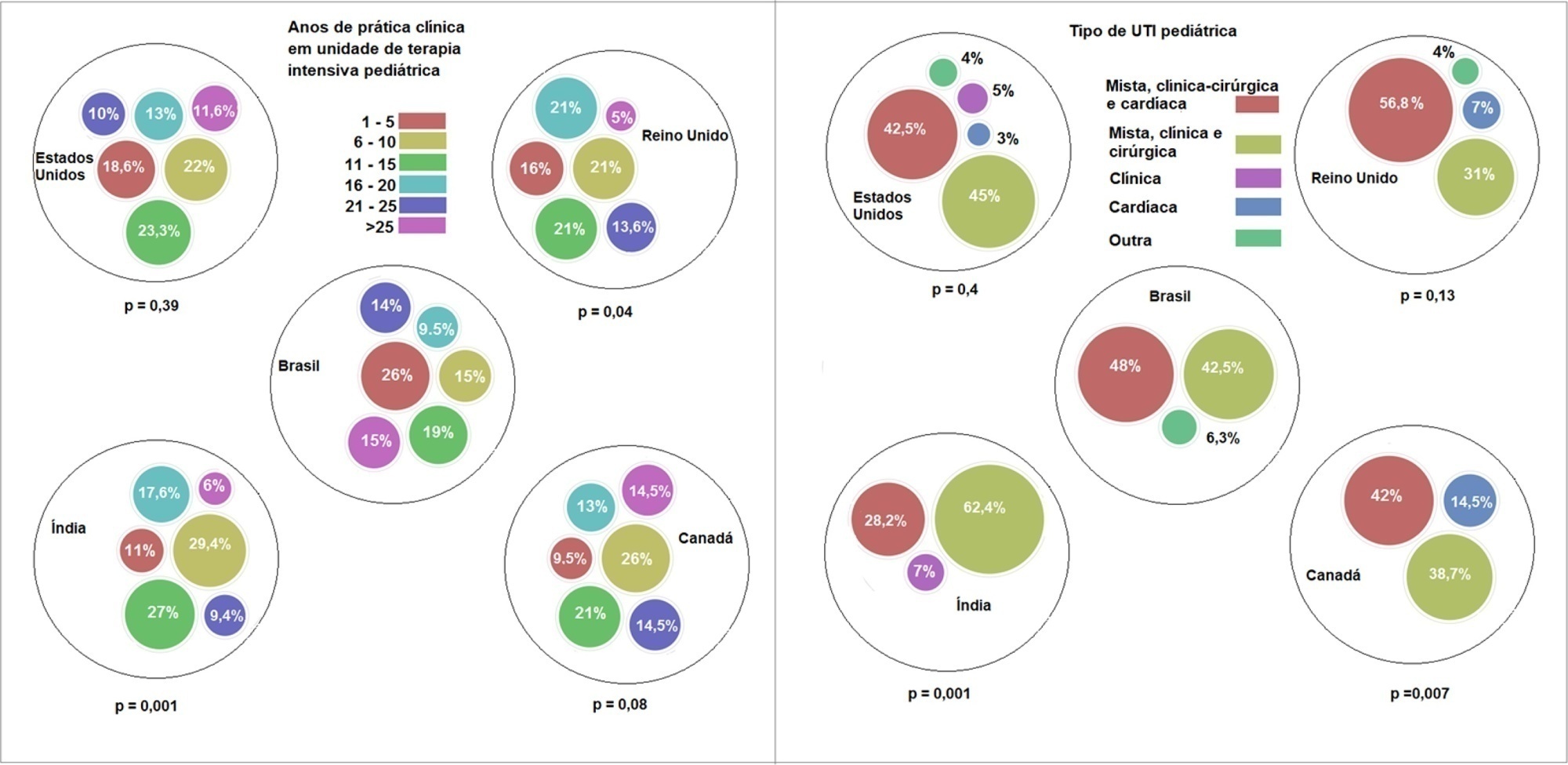
-
Original Article
Evaluation of the use of electronic medical record systems in Brazilian intensive care units
Rev Bras Ter Intensiva. 2018;30(3):338-346
Abstract
Original ArticleEvaluation of the use of electronic medical record systems in Brazilian intensive care units
Rev Bras Ter Intensiva. 2018;30(3):338-346
DOI 10.5935/0103-507X.20180057
Views0ABSTRACT
Objective:
To examine the prevalence of the use of electronic medical record systems in Brazilian intensive care units and the perceptions of intensive care physicians regarding the contribution of electronic medical record systems toward improving safety and quality in clinical practice.
Methods:
Using an online questionnaire, physicians working in Brazilian intensive care units answered questions about the use of electronic medical record systems in the hospitals in which they worked. They were asked about the types of electronic medical record systems used and their levels of satisfaction with these systems in terms of improving quality and safety.
Results:
Of the 4,772 invitations sent, 204 physicians responded to the questionnaire. Most used electronic medical record and prescription systems (92.6%), worked in private hospitals (43.1%), worked in general adult intensive care units (66.7%) and used Private System A (39.2%); most systems had been used for between 2 and 4 years (25.5%). Furthermore, the majority (84.6%) believed that the electronic system provided better quality than a paper system, and 76.7% believed that electronic systems provided greater safety than paper systems.
Conclusion:
Electronic medical record systems seem to be widely used by the Brazilian intensive care physicians who responded to the questionnaire and, according to the data, seem to provide greater quality and safety than do paper records.
Keywords:BrazilElectronic health recordsHealth information systemHealth information technologyHealth surveysIntensive care unitsMedical informaticsSee more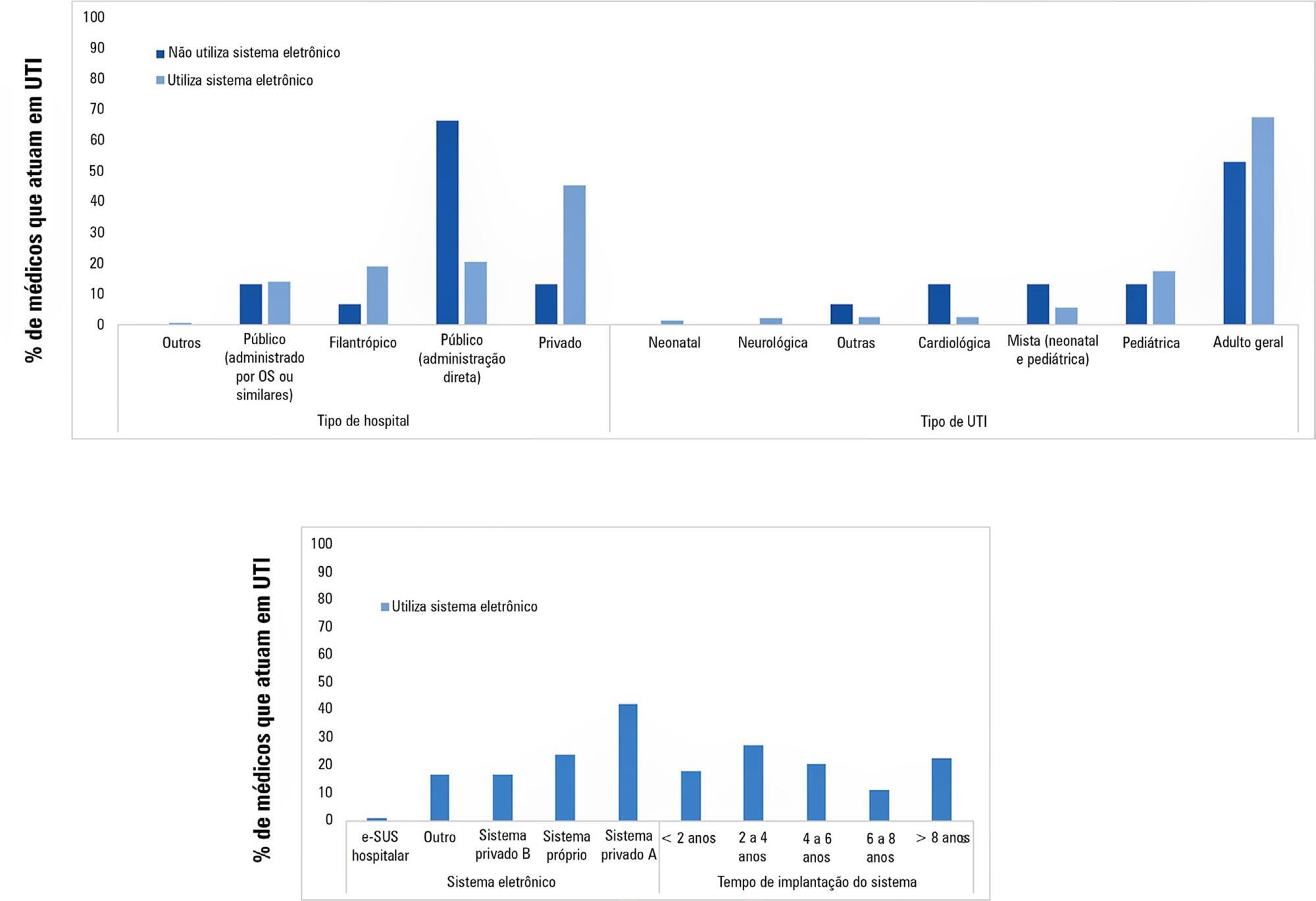
-
Letters to the Editor
To: Contemporary treatment of children with critical and near-fatal asthma
Rev Bras Ter Intensiva. 2016;28(3):356-357
Abstract
Letters to the EditorTo: Contemporary treatment of children with critical and near-fatal asthma
Rev Bras Ter Intensiva. 2016;28(3):356-357
DOI 10.5935/0103-507X.20160063
Views1To the Editor The review article by Shein et al.() on the treatment of acute severe asthma in children is timely due to the prevalence of the disease and often variable and inconsistent disease management, which includes adjuvant therapies and depends on the availability of resources, the local practices and the preference of doctors. The […]See more -
Letters to the Editor
To: Severe hypercalcemia as a form of acute lymphoblastic leukemia presentation in children
Rev Bras Ter Intensiva. 2016;28(2):199-200
Abstract
Letters to the EditorTo: Severe hypercalcemia as a form of acute lymphoblastic leukemia presentation in children
Rev Bras Ter Intensiva. 2016;28(2):199-200
DOI 10.5935/0103-507X.20160034
Views1To the Editor, Severe hypercalcemia of malignancy in children has been extensively described in the medical literature.() However, this complication usually presents as a late symptom of acute lymphoblastic disease and not as an early manifestation, as described in a case report by Martins et al.() Colleti Junior et al.() also observed that hypercalcemia was […]See more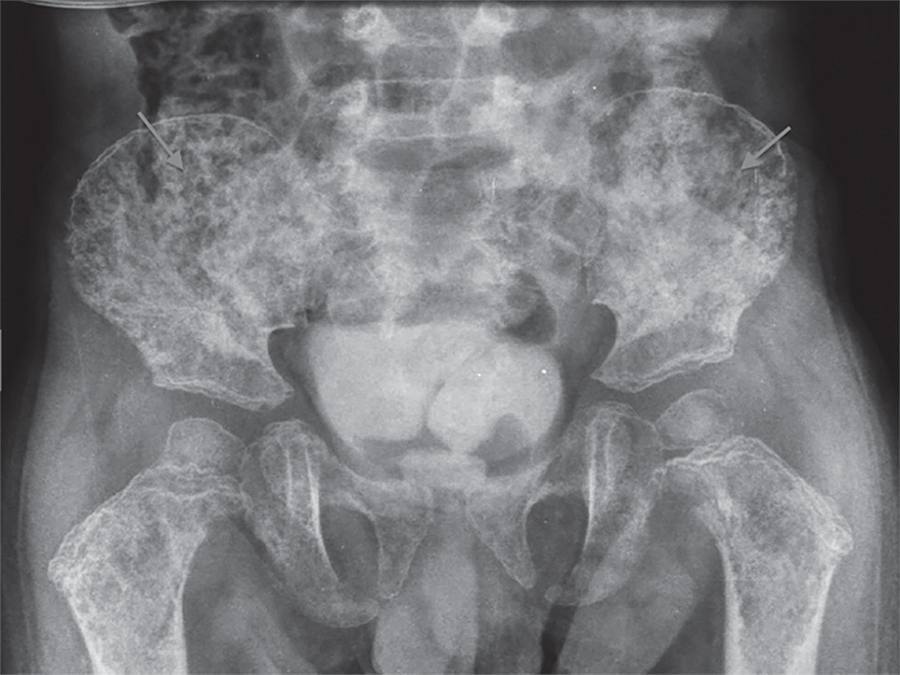
Search
Search in:
KEY WORDS
Case reports Child Coronavirus infections COVID-19 Critical care Critical illness Extracorporeal membrane oxygenation Infant, newborn Intensive care Intensive care units Intensive care units, pediatric mechanical ventilation Mortality Physical therapy modalities Prognosis Respiration, artificial Respiratory insufficiency risk factors SARS-CoV-2 Sepsis




